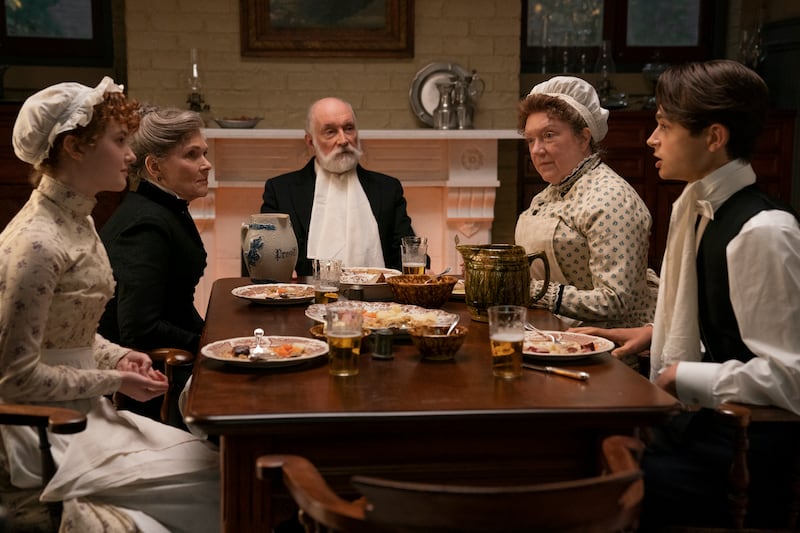Julian Fellowes has cashed in very lucratively on global audiences’ fascination with – and perhaps even instinctual deference to – posh English people. And, having wooed US viewers, in particular, with Downton Abbey, the top-hatted juggernaut which portrayed the British class system as a jolly fandango rooted in patrician benevolence, he now takes the obvious next stop of crossing the Atlantic and giving Americans a romanticised take on their own history.
The Gilded Age (Sky Atlantic, Tuesday) is set in the era of Robber Barons and the tumultuous emergence of a mass labour movement in the United States. However, Fellowes encourages us to not worry our little brains about such historical wrinkles. Instead, he whips out his airbrush and brings us an 1880s New York where the rich are wise and kind-hearted and forever arranging dinner dates and where everybody else knows their place. Forget There Will Be Blood. This is There Will Brunch.
So much of The Gilded Age feels like the same scene played over and over
There’s a token Irish character – a maid Fellowes also makes the token racist. Bridget (Taylor Richardson) reacts badly when informed she will have to share her living space with young black woman Peggy Scott (Denée Benton) whom her mistresses’ niece, Marian Brook, (Louisa Jacobson, daughter of Meryl Streep) has befriended.
“They’re coming up here now to take our jobs,” she complains. Her red hair – well what other colour? – is all a quiver in fury. Hooray, then, for the upstanding British butler (Simon Jones), who soon sets the prejudiced Irishwoman to rights – displaying the same progressive credentials that were a feature of charming Earl Grantham in Downton.

Fellowes would no doubt point out that there were real strains between Irish migrants and African-Americans at this time in American history. But these tensions did not exist in a vacuum. And to single out an Irish woman (played by an American with a “brogue”) as his most explicitly small-minded character is clearly a choice.
The intrusion of an Irish accent – or something vaguely resembling one – is nonetheless a welcome novelty as so much of The Gilded Age feels like the same scene played over and over. Fellowes has crewed the series with an indistinguishable gallery of Upper West Side blue-bloods.
All speak in that annoyingly affected accent obligatory in American costume dramas and say things such as “do you often come to Newport, Miss Astor?”. Think Winona Ryder in the 1994 adaptation of Little Woman mixed with Daniel Day-Lewis in Scorsese’s The Age of Innocence.
For a show about untrammelled wealth the whole thing looks horribly cheap
Among the characters we are expected to love or hate are Marian’s aunts – pronounced “auuuuuuunts”– Ada Brook and Agnes van Rhijn. One of the pair is reportedly played by Cynthia Nixon, last seen helping take a monkey wrench to the legacy of Sex and the City with the dreadful And Just Like That. But frankly, with the identikit wigs and the Winona Day-Lewis accents, it’s hard to tell who is who (apart from Racist Irish Maid).
The Gilded Age is keen to scrutinise the fault lines between new and old money in Manhattan in 1882. Yet by modern standards even the new old money is pretty antique and so it’s hard to sort the aristocrats from the arrivistes. Paradoxically for a show about untrammelled wealth the whole thing looks horribly cheap. An early shot of a mansion under construction is so obviously rendered on a computer you half expected Sonic the Hedgehog to appear running along the upper gantry.
Downton was an international smash and with 2020’s Belgravia Fellowes demonstrated that he know his way around a blue-stockinged guilty pleasure (it was a soap opera in a retro frock). With the Gilded Age, however, he strains for the sort of prestige TV respectability that is an HBO signature. Alas, the series has nothing to say about life in either the 19th century or today. Aside, that is, from Fellowes’s usual mantra of “golly, aren’t posh people the best?”.












